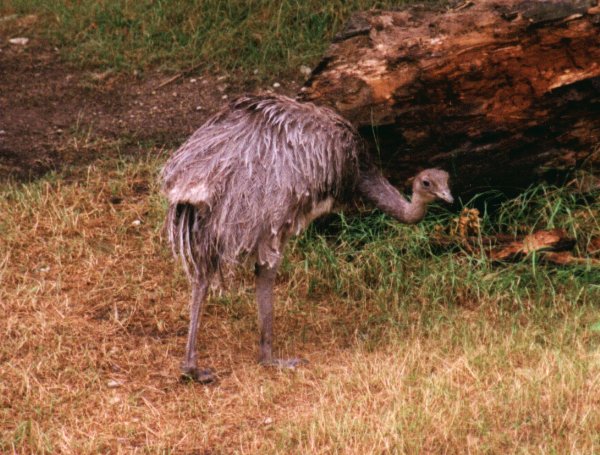

Pterocnemia pennata
Darwin's Rhea occurs in South America: Patagonia, in the Andes in Argentina, Chile, Bolivia and Peru. They feed on plants, seeds, roots and fruits, but they may also consume insects and small vertebrates. They also ingest pebbles. They lay up to 30 eggs in their nest. The male is the one who performs the incubation and chick-rearing. When the first chick hatches, it begins calling, stimulating the others to hatch. Thus they all hatch synchronously in a period of 24-28 hours. The chicks are led away from the nest by the male after a few days, and they keep in touch by means of contact whistles. The male is very protective. Lost chicks are often adopted by another male with his own chicks, which leads to a wide range of ages within one group.
Darwin's Rhea can reach speeds of 60 km/h. Although it can run faster than its predators, it has the habit of suddenly squatting down in the bushes and flattening its body against the ground so that it is not noticed. Another tactic it uses while fleeing is to run in zigzag patterns or suddenly turn at right angles.
The above picture was taken at the Columbus, OH zoo, in August 2002.
Family Rheidae
Order Struthioniformes
Class Aves
Subphylum Vertebrata
Phylum Chordata
Kingdom Animalia
Life on Earth
Index